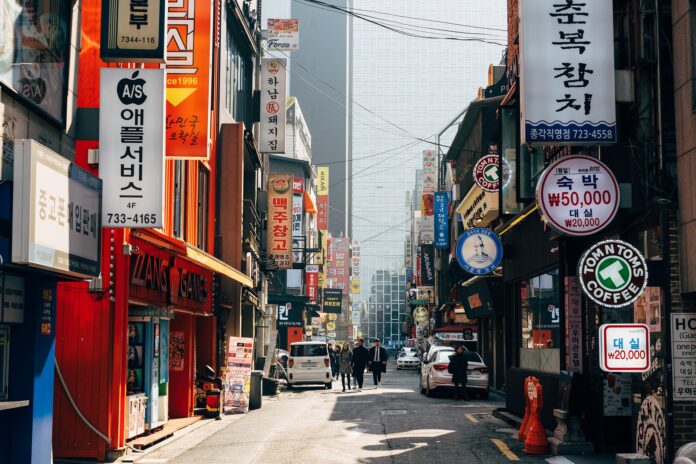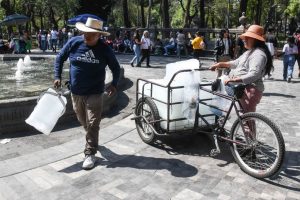The Republic of Korea became democratic in 1987 and has experienced rapid economic growth, being the fastest developing country and the 10th largest economy in the world.
However, its democracy is perfectible and has some characteristics of governments
authoritarian that preceded it, as well as socio-cultural, political and legal obstacles. This book, “The New Dynamics of Democracy in South Korea”, edited by Kim Chae-Han, professor and author of more than 200 articles and books, describes, through studies and surveys, the current state of the democracy in Korea, in order to understand its evolution and its challenges.
The publication is divided into ten chapters that correspond to four categories that influence Korean democracy: social gaps (regionalism, age groups and class), relations between the masses and the elites (political culture, mobilization and participation, and the party system ), political institutions (legal regulation and domination of the executive power) and public policies (welfare policy and foreign policy). Due to the academic nature of the publication, it helps to understand the Korean political system with the possibility of comparing it with that of other countries.
Costa Rica and Korea celebrate 60 years of diplomatic relations
In the introduction, Dr. Kim argues that Korean democracy can be analyzed in twenty-year cycles with changes between conservative and progressive regimes every ten years. Since its democratization in 1987, Korea has experienced ten years of conservative governments (Roh Tae-woo, military leader, and Kim Young Sam, democratic leader), ten years of progressive governments (Kim Dae-jung, democratic leader, and Roh Moo- hyun, independent leader), ten years of conservative governments (Lee Myung-bak, independent leader, and Park Geun-hye, successor to President Park Chunghee), and the current progressive government (Moon Jae-in, successor to President Roh Moo- hyun).
Dr. Kim predicts that a new style of leader is expected to win the 2022 presidential election. His prediction may not come to pass, as one of the two main candidates for the March 2022 presidential election is progressive. Lee Jae-myung of the Kim Chae-Han Party.
Democratic (PD) and considerate, just like Moon Jae-in, President Roh Moo-hyun’s successor. If, on the other hand, the main opposition candidate of the conservative Ming People’s Power Party (PPP), Yoon Seok-youl, a former attorney general and independent leader, were to win, would there be a new style of presidential leadership as Kim Chae points out? -they have. In chapter one, Jhee Byong-kuen finds that the feeling
regional still influences electoral preferences.
Anti-Honam sentiment, a less industrialized, traditionally progressive, southwestern region of Korea, close to the DP, is opposed by anti-Yeongnam sentiment, a more industrialized, traditionally conservative, southeastern region of Korea.
close to PPP. Because regional sentiment is malleable and related to the political environment, Jee suggests reducing this divide by reducing economic disparity between regions and preventing the escalation of ideological conflicts; two major challenges.
Park Kyungmee in the second chapter argues that the protests that led to the impeachment of President Park in 2017 made Korean society believe that it can influence politics through civic participation. Likewise, he shows that age influences electoral preferences: the younger generations tend to vote for the PD, while the older ones vote for the PPP. Therefore, he suggests that the base of the PPP may be reduced in the future due to generational change.
This, which the author argues, does not coincide with the 2022 elections, since a large percentage of young men voted in the PPP elections for the candidate Yoon.
In the introduction, Dr. Kim argues that Korean democracy can be analyzed in cycles of twenty years with changes between conservative and progressive regimes every ten years.
In the third chapter, Yun Ji-whan argues that the neutralization of social classes has allowed Korean politicians to present themselves as benefactors and hegemonic leaders of all social classes, that is, as the only saviors from the prevailing evils of capitalism. It emphasizes that the rulers do not seek to solve social problems, but rather to create a moral hegemony through the welfare state so that the people become dependent on it, so that the quality of democracy depends on the sincerity of the leader and not on the participation Social.
This evil that Yun points out applies to several democratic countries, including Latin America. Cho Youngho, Kim Mi-son and Kim Yong Cheol in the fourth chapter conducted a survey that showed that the majority of Koreans reject authoritarianism (85%) and consider that participatory democracy through referendum should be expanded (59%) , while a minority prefers representative democracy (29%).
They argue that the 2016-17 protests evidenced high citizen activism in juxtaposition with weak representative institutions to what the authors determine as “contentious democracy,” which is politically unstable. In the fifth chapter, Sung-jin Yoo points out that the protests that led to the impeachment of President Park in 2017 marked a milestone where immense political participation resulted in a successful return to democracy with the presidential election of Moon Jae-in, who had with a voter turnout of 77%, the highest since 1997.
It highlights that this important participation took place due to the combination of high political dissatisfaction, due to the corruption scandals of the Park government, with the belief in democracy. According to Yoo, this suggests that Koreans want to reform their political system, despite mistrust of their rulers.
Kwak Jin-young argues in the sixth chapter that the five-year Korean presidential system gives the president great autonomy in the use of resources and extensive control over political parties, but that he loses power at the end of his term, which they capitalize on parties by influencing divisions and mergers among them to win elections and not because they pursue the same policies.
This causes partisan alliances to be unstable, so Kwak suggests a reform that allows alliances between parties to promote public policies, in order to further develop the party system focused on public policies, which would affect greater governance. of the Korean political system. In the seventh chapter, Kang Won-taek points out that the regulations related to political competition have remained practically the same since Korean democratization and many have been inherited from authoritarianism.
He considers that the anachronistic electoral laws favor the two major parties, since it is very difficult to create new political parties, and they do not allow fair competition in elections, nor free political participation because the voter is only allowed the role of spectator. The author therefore suggests democratizing the laws that govern parties to make elections more participatory. This is considered complicated because they are
the same political parties that can change the law who do not want to lose power.
Moon Woojin refers in the eighth chapter to Korea as an “imperial presidency” due to the dominance of the executive branch in enacting laws. He argues that the president has broad powers under the Constitution to propose bills. Furthermore, if the president’s party has a majority in Congress, he has the de facto power to impose his own agenda because members of Congress from his
party do not oppose bills supported by the president and if they obtain a three-fifths majority, the decree becomes law. This is an evil that afflicts several democratic regimes, particularly in Latin America.
the 2016-17 protests evidenced the high activism of citizens in juxtaposition with weak representative institutions to what the authors determine as “contentious democracy”
In the ninth chapter, Yang Jae-jin conducts a study to determine why the Korean welfare state has advanced less than the European one, despite the consolidation of democracy in Korea. His analysis shows that because the labor movement within the corporate sector in Korea is strong, workers’ demands for redistribution are met through higher wages and corporate welfare, rather than by resorting to the social welfare of all workers. citizens. This also happens because the
congressmen represent a particular district and not the needs of the
country in general, such as social security.
Lee Shin-wha explains in the last chapter how public opinion and polarization influence foreign policy decisions, which represents a dilemma for the Korean government. It exemplifies with three cases how the national perception of the Korean government has been damaged by accepting agreements with other countries with: the import of meat with the United States in 2008, the agreement reached with Japan to compensate comfort women in 2015 and the deployment of the THAAD anti-missile system in 2015.
On the other hand, it explains the dilemma due to the damage caused in Korea’s relations with Japan when President Moon scrapped the same agreement with Japan and, on the other hand, with China for accepting the THAAD that affects China’s security interests in the region. In conclusion, this book analyzes the evolution of democracy in Korea and its current state.
The impeachment of President Park in 2017 caused great commotion in the Korean people, which led to deep reflection on the fact that the consolidation of democracy is not enough to end corruption and mismanagement. Thus, these collected essays explore the challenges of Korean democracy and provide some
alternatives on how to overcome them, although the answers are not easy and face the opposition of the current political system and the restrictions imposed on Korea by economic interests and those of other nations given its geopolitical context.
This book leaves the reader thinking that Korea and Latin America share several challenges in the consolidation of their democracy, so it would be interesting to compare them with some countries in the region. Likewise, the analysis of this publication could be expanded in the future to include other issues relevant to Korean democracy such as: the challenge of the independence of the attorney general’s office from presidential power and business interests, and in a more positive tone , the confidence of the Korean population in the rule of law.
Note: The article was originally published by the Asia / Latin America Magazine. The reproduction of the same is done with the due authorization. Link to original article:http://www.asiaamericalatina.org/wp-content/uploads/2022/05/12.7-Resena-The-New-Dynamics-of-Democracy-in-South-Korea-1.pdf















Add Comment